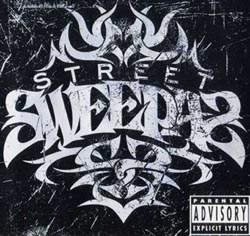
When NWA dropped, no one really knew how long this new
�Gangster� rap style would last.
But during the 90�s, Critics, Fans, and Artists could not have predicted
the �Gangster� rap explosion. What
was once forbidden on mainstream radio became the norm. Then came the
backlash. With an influx of
�Studio� Gangsters combined with the influx of same old beats, �Gangster� Rap
was being led to a slow death.
In the year 2000, the general population believed that
�Gangster� Rap is played out.
The perception is that a bunch of Homies flow their lyrics over oldies,
and hence, we�ve heard it all before.
Flip through your local station, and you will hear Britney Spears or Limp
Bizkit. Radio no longer plays the
street tales anymore.
So, in the year 2001, �Gangster� Rap is on life
support, waiting for the next artist to revive the genre. Ready to give the genre the jolt it
needs are many up and coming underground Brown Artists. Listen to Conejos�
Fallen Angel to see an Artist flexing new lyrical tales about the �Gangster�
life, with creative beats to match.
And if you peep out the new �Youngsters� in the game you�ll notice that
little by little, the gangster sound is evolving. A group ready to take the flag and carry
it through the �new� year are a few Gangsters out of South East Los, California.
The Street Sweepaz.
The Street Sweepaz consist of Champ, Hooch, and
Mack. The self-titled debut album
is now out on Ultima records. The
album has 13 tracks, but the 13th track is a radio version of track
3, West Coast Gangsta Boogie. If
you flip to the back cover, you�ll notice that this is definitely a �Gangster�
rap album. With tracks called �I�m
a Gangsta�, �West Coast Gangsta
Boogie�, �Suck D**k� and �The
Robbery�, it�s easy to guess what the topics are going to be. Note: the Street
Sweepaz crew spit their rhymes with no remorse, and the lyrics are often
explicit.
The universal street stories will never change, for example,
the struggles of living in a varrio, Police corruption, the drama with "hood
rats", and claiming varrios. Every
�Real� Gangster lives out these tales on a daily basis. But the music production on half of the
album begins to show the evolution of that new �Gangster� Rap sound, and the
direction it is headed to. Not wanting to get left behind in this new
underground Latino Hip-Hop movement, the production on the album is on the right
path, moving in the same direction as the other forms of hip-hop.
This album captures the two sides of �Gangster� Rap:
the new gangster sound composed of original beats for that ass, and for all you
diehard "old school" gangster rap fanatics, those bouncy lowriding tracks.
The track "g-hop" is a track for all Gangbangers out
there. With lyrics that spit�
"Eses,
bloods, crips don't trip
We
make gangster moves on a gangster tip
I'm
in a low low with the cholos
Laughing at the po po
Calling up some hoes
On a digital cell phone"
A track for all you criminales is "The Robbery". This track takes you in the mind
of someone who has hit rock bottom with life, and now has nothing to lose.
Mack lets all those pure hip-hop heads know that gangsters
can freestyle to. On �Freestylin�,
Mack lets out a 48-second flow. If
you�ve every thrown a Varrio House Party, then you can relate to the track
�House Party�.
A problem with the album, which is also a problem with the
�Gangster� rap genre in general, is the fact that many people who haven�t lived
this lifestyle might be turned-off by it.
Especially when the album deals with sending fools to the grave. This album is definitely not for the
�Lightweights�.
All in all, this is one of those must have albums if you
prefer the �Gangster� rap style. If you�ve lived or are living this �Gangster�
lifestyle, you will be greatly satisfied by the explicit content. Even those who
haven�t lived this lifestyle and are interested in the hearing where the
�Gangster� rap sound is headed, should pick up this album.
[Click Here for BP Online Store!]
|




